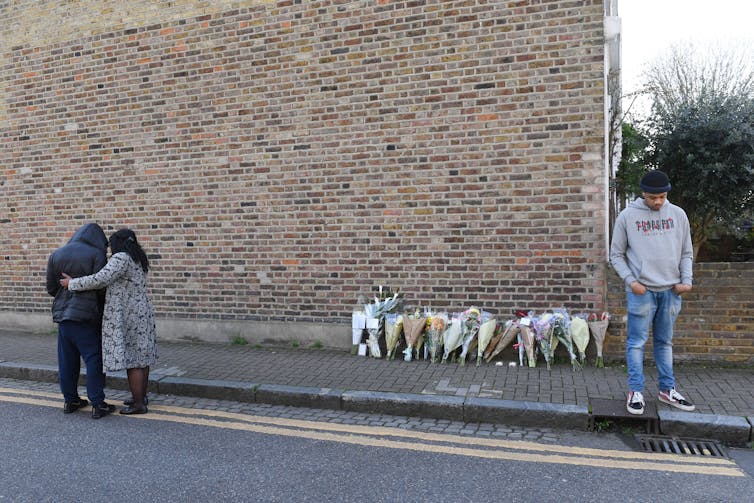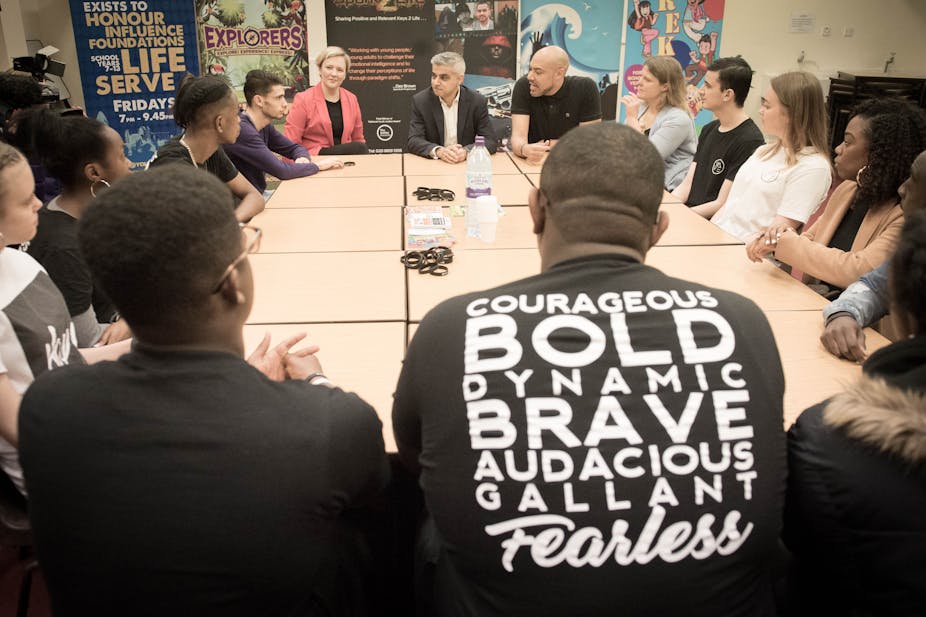Within the first few hours of 2019, two people in London had been stabbed to death. This came just after the Metropolitan Police revealed 134 people had been killed in the capital in 2018, with just over half the victims of knife crime.
The spate of knife crimes in London has whipped the media and politicians into a frenzy. Knife crime is now described as an “epidemic” that’s spiralling out of control. Its impact on victims and communities is horrifying and the police and courts are seemingly powerless to address it.
The typical perpetrator, allegedly, is young and working class, part dangerous, part feckless. This new breed of violent child offender seemingly cannot control themselves, and can barely be controlled by others. The result is a society that feels impotent and is growing fearful of its children.
But in reality, the UK is witnessing the construction of a moral panic about knife crime: the problem is politically constructed, its causes falsely identified, and the “solution” ineffectively articulated.
Research into knife crime, and government strategies aimed at tackling it typically adopt an “epidemiological” approach that treats knife crime as an individual pathology or disease which requires medical treatment. Alternative approaches focused on public health centre on the causes of knife crime – such as exposure to psychological and social risk factors from family, peers, or at school.
Either way, knife crime is committed by a broken child in need of fixing. But both these approaches are counter-productive and harmful.
Toxic environments
To counteract the moral panic and identify appropriate solutions to children carrying and using knives, society urgently needs to bring the issue into its proper perspective. Knife crime is a complex social problem. It is a symptom of the toxic environments that adults create around children, who then become both perpetrators and victims. These toxic environments can leave children disaffected, fearful and vengeful. They are scared and provoked into carrying knives, joining gangs and committing violent acts.
It is no coincidence, therefore, that the vast majority of knife crime takes place in neighbourhoods suffering from huge social disadvantage and disinvestment.
Children pass through many different environments in their daily lives relating to their families, education, neighbourhood, employment and recreation. Environments become toxic, harmful and can cause crime when children’s relationships and experiences fail to meet their basic needs, in particular, their right to be protected, nurtured and enabled to achieve positive outcomes.

Work with children living in toxic environments often focuses exclusively on preventing negative behaviours and their effects, such as crime, substance use and school exclusion, protecting adults, and controlling children’s behaviours, choices and opportunities. Such efforts treat children as little adults with adult capacities, development and foresight – contrary to evidence indicating that this is patently untrue.
Toxic environments are not created by children – who are the victims in these environments – but by politicians and by the politics of austerity. Local council estates have been hollowed out by a decade of austerity which has ripped away funding for basic services for young people.
Let’s be clear, austerity is a deliberate political choice, it is not inevitable – but it has consequences. Austerity abrogates the responsibility to care for, to nurture and to lead children into positive lifestyles, shifting this responsibility to criminal gangs and drug dealers.
Children first
Responses to knife crime must be focused on the child and the adult environments that shape them. And they must involve partnerships between a variety of children’s services, such as youth offending teams and youth work, and other relevant organisations such as police, schools, and housing authorities.
These partnerships should prioritise positive behaviours and outcomes. Children need access to services, guidance and opportunities that build their strengths, capacities and aspirations, and develop their pro-social relationships with adults. Our own research indicates that this approach increases children’s achievements and successes, while decreasing negative behaviours and outcomes.
Children must be diverted away from toxic environments such as the youth justice system, into positive, nurturing ones. These environments should provide appropriate education, social care that meets children’s needs, effective youth services and training and employment opportunities. This is an approach that we’ve proven can improve children’s lives and their chances at school, finding work, and relationships with professionals, while reducing criminal and antisocial outcomes.
Engaging with children is sustainable and productive. Imposing interventions on children is short-term and destructive. It can make a bad situation worse.
Knife crime is a social problem – its causes, not its symptoms, must be treated, and austerity is one of its causes. The UK needs to refill local communities with positive services and activities for young people. Children are part of the solution to knife crime, not part of the problem.

